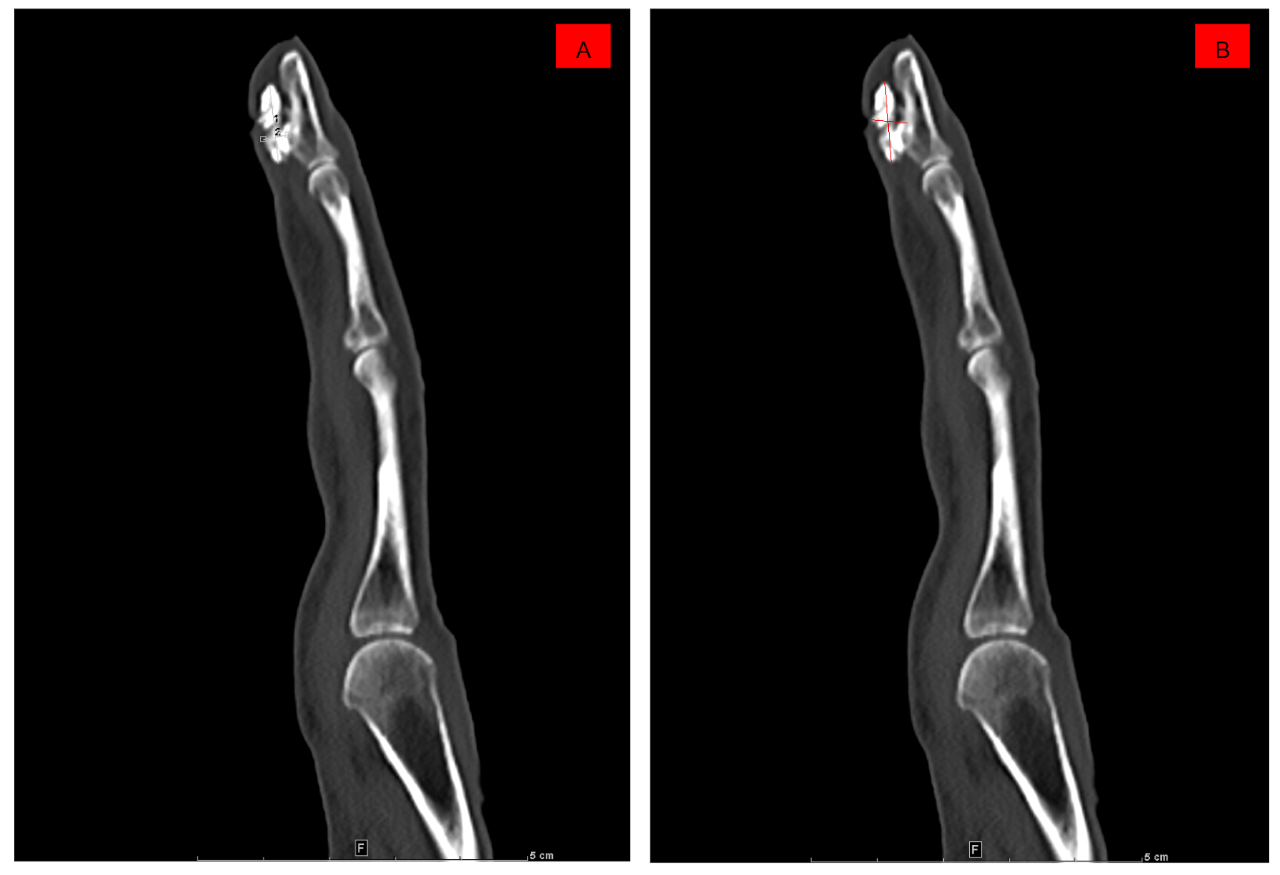Session Information
Date: Tuesday, November 12, 2019
Title: Systemic Sclerosis & Related Disorders – Clinical Poster III
Session Type: Poster Session (Tuesday)
Session Time: 9:00AM-11:00AM
Background/Purpose: Calcinosis cutis, found in both systemic sclerosis (SSc) and juvenile dermatomyositis patients, can be extensive and debilitating. Potential treatments have been identified, but a standardized and validated method for precise and accurate whole-body calcinosis cutis burden quantification is necessary to allow for valid clinical trials. Dual energy computed tomography (DECT) can differentiate between calcinosis cutis and healthy bone, but a radiologist must manually quantify the irregularly shaped lesions, which is time-consuming and costly. Computer vision, including convolutional neural network (CNN) algorithms, has been increasingly applied to solve problems in clinical medicine with success. The aim of this study is to optimize a CNN algorithm to facilitate quantification of calcinosis cutis disease burden.
Methods: De-identified 2-dimensional (2-D) DECT images from patients with SSc, with clinically apparent calcinosis cutis, were obtained. An expert musculoskeletal radiologist manually segmented the three forefinger phalanges to serve as the gold standard comparison. Computer scientists then trained and tested the CNN algorithm for finger bone segmentation. After reliable finger bone segmentation was achieved, the area of a calcinosis cutis lesion was measured and compared to measurements performed by a radiologist to test the utility of the CNN approach.
Results: Thirty 2D DECT hand images from patients with SSc were used to identify the most appropriate CNN algorithm for finger bone segmentation (Image 1A, representative image). The U-net CNN algorithm demonstrated superior performance. 500 epochs were necessary to adequately segment healthy finger bones from adjacent dystrophic calcifications (Image 1B). Calcinosis cutis lesions were then identified by subtracting normal finger bones from the image to permit the computer to “see” the dystrophic calcium lesions (Image 1C). When measured by a radiologist, the length x width of the lesion was used to calculate the 2-D area, assuming a relatively smooth lesion contour (Image 2A), whereas the CNN-calculated 2-D area utilized pixel intensities (Image 2B).
Conclusion: To our knowledge, the present study is the first to apply computer vision to the challenge of calcinosis cutis quantification. We demonstrate that CNN algorithms applied to DECT hand images of SSc patients can be used to differentiate calcinosis cutis lesions from adjacent healthy bone. When compared to the gold standard of radiologist review, CNN algorithms take into account lesion irregularity, which may allow for more precise measurements. Future work will involve lesion volume and density quantification, crucial for assessing response to treatment, as well as validation in a larger, independent cohort.
Image 1B: Segmented healthy finger bone
Image 1C: Highlighted calcinosis cutis lesion, identified by subtracting normal finger bone from the overall image, emphasizing the area of dystrophic calcium
To cite this abstract in AMA style:
Chandrasekaran A, Omar I, Fu Z, Ren S, Hinchcliff M. Computer Vision Applied to Dual Energy Computed Tomography Images for Precise Calcinosis Cutis Quantification in Patients with Systemic Sclerosis [abstract]. Arthritis Rheumatol. 2019; 71 (suppl 10). https://acrabstracts.org/abstract/computer-vision-applied-to-dual-energy-computed-tomography-images-for-precise-calcinosis-cutis-quantification-in-patients-with-systemic-sclerosis/. Accessed .« Back to 2019 ACR/ARP Annual Meeting
ACR Meeting Abstracts - https://acrabstracts.org/abstract/computer-vision-applied-to-dual-energy-computed-tomography-images-for-precise-calcinosis-cutis-quantification-in-patients-with-systemic-sclerosis/


